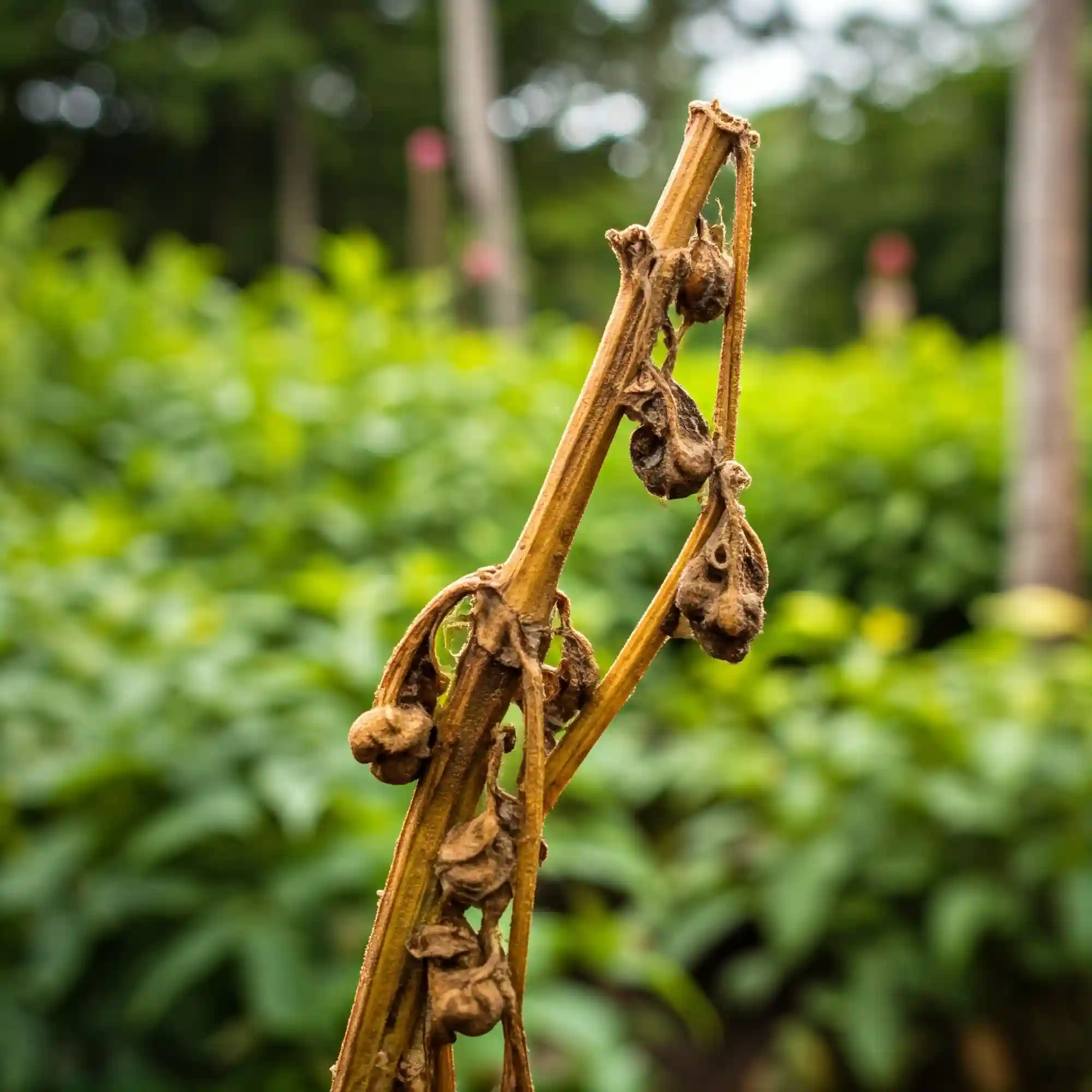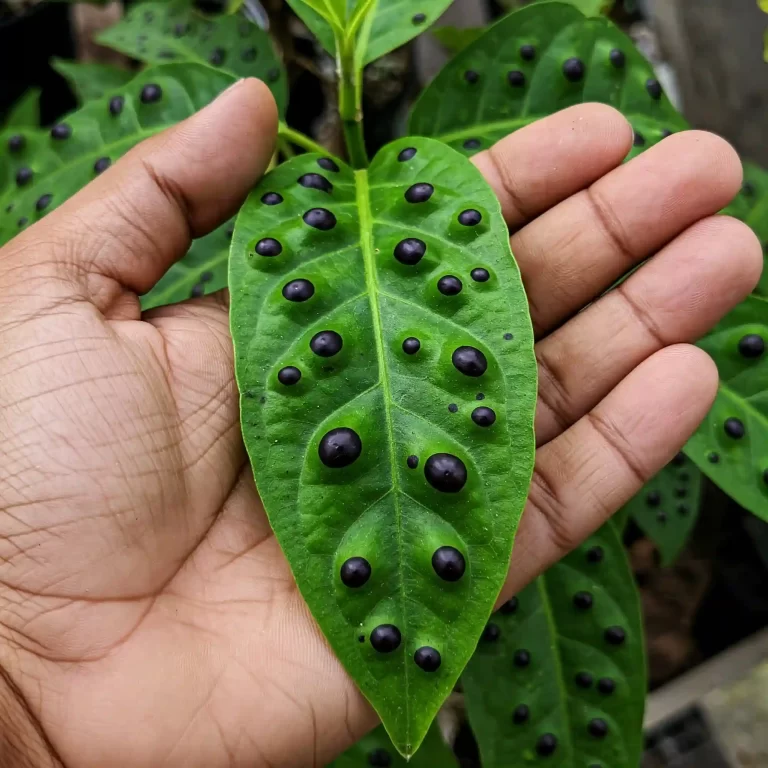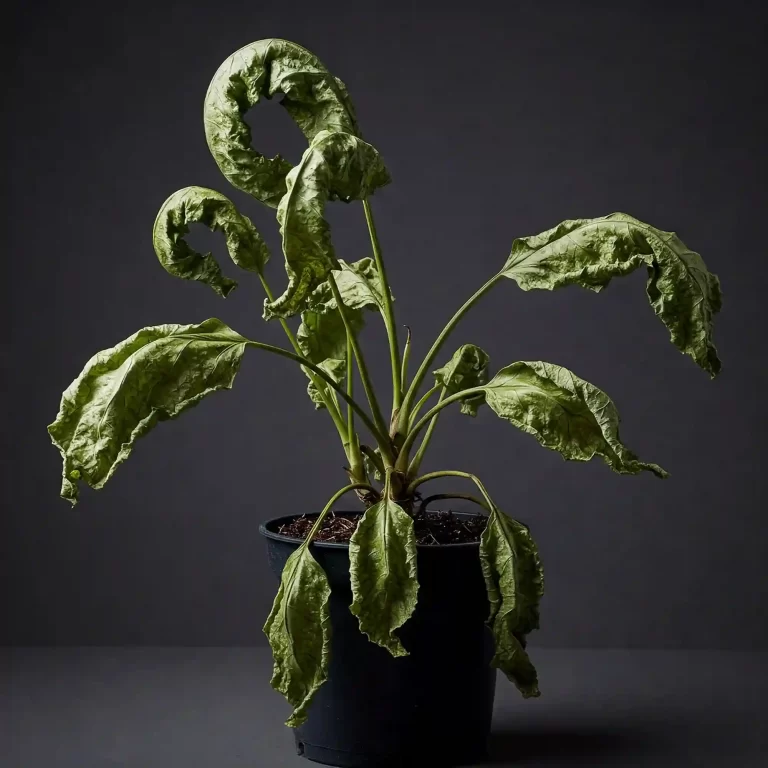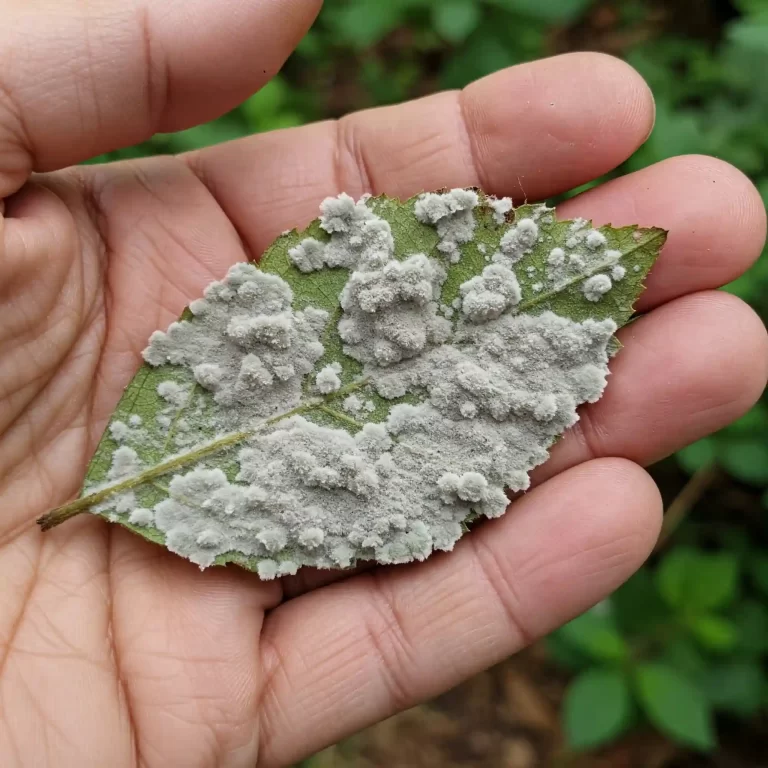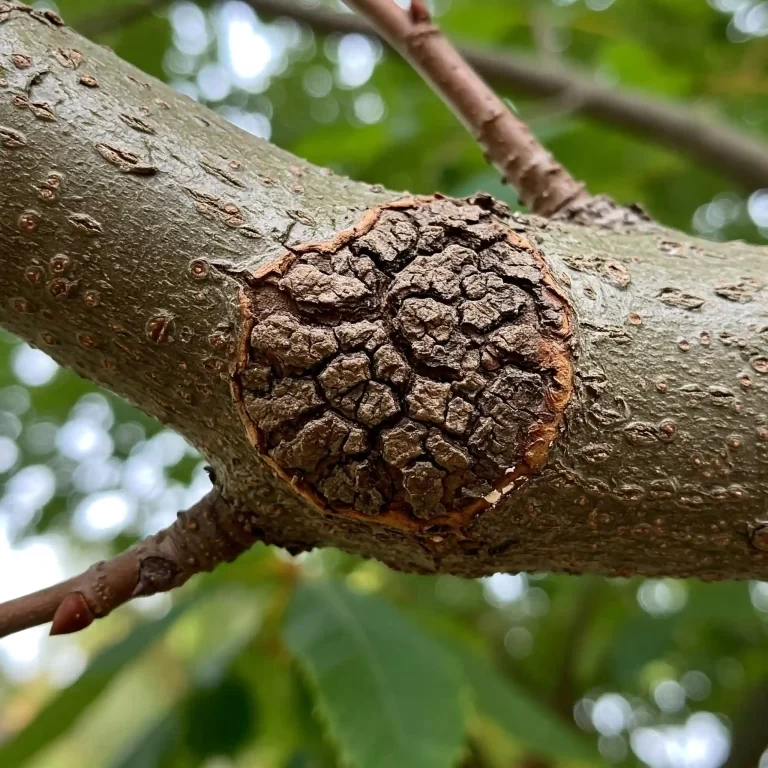Have you ever noticed your prized tomato plant suddenly wilting, its stem turning mushy and brown near the base? It’s a heartbreaking sight, especially after all the time and effort you’ve invested in your garden. This is often the work of bacterial stem rot, a relentless disease that can quickly devastate your plants. I know the frustration of seeing your hard work seemingly vanish overnight. I’ve been there myself, watching entire rows of seedlings succumb to this destructive rot. But don’t despair. There are effective ways to combat this problem. In this comprehensive guide, I’ll share proven strategies for identifying, treating, and, most importantly, preventing bacterial stem rot, so you can protect your plants and enjoy a thriving garden.
Bacterial Stem Rot: Your Ultimate Guide to Prevention and Treatment
Bacterial stem rot is a plant disease caused by several species of bacteria that attack the soft tissues of plant stems, often leading to rapid decay, wilting, and ultimately, plant death. It thrives in moist conditions and can affect a wide range of plants, from vegetables like tomatoes and squash to ornamental plants like geraniums. The bacteria responsible for this disease, such as Pectobacterium carotovorum, Erwinia carotovora, and Dickeya dadantii, are opportunistic pathogens, meaning they take advantage of weakened or stressed plants. These bacteria produce enzymes that break down plant cell walls, causing the characteristic soft, mushy rot. This process can occur rapidly, especially in warm, humid environments. I’ve seen healthy plants collapse within days of the first symptoms appearing.
The disease often starts near the soil line, where moisture tends to accumulate. From there, it can spread upwards, affecting the entire stem and eventually the leaves and fruit. One of the telltale signs of bacterial stem rot is a foul odor emanating from the decaying tissue. This odor is a result of the bacterial decomposition process. It’s important to differentiate bacterial stem rot from fungal stem rots, which often present with different symptoms, such as visible fungal growth or distinct lesions.
Key Characteristics of Bacterial Stem Rot:
- Rapid decay: The disease can progress quickly, causing significant damage in a short period.
- Soft, mushy tissue: Affected stems become soft and mushy to the touch.
- Foul odor: A characteristic foul smell is often present.
- Wilting and collapse: The plant may wilt and eventually collapse due to the loss of structural integrity in the stem.
- Moist conditions: The disease thrives in humid and overly moist environments.
How Bacterial Stem Rot Differs from Fungal Stem Rot
| Feature | Bacterial Stem Rot | Fungal Stem Rot |
| Cause | Bacteria (e.g., Pectobacterium, Erwinia) | Fungi (e.g., Rhizoctonia, Fusarium) |
| Texture of Rot | Soft, mushy, slimy | Dry, fibrous, or sometimes slightly mushy |
| Odor | Often a foul odor | Usually no distinct odor, sometimes musty |
| Visible Growth | Generally no visible fungal growth | May have visible mold or fungal structures (mycelium) |
| Environmental Factors | Thrives in very moist conditions. | Can tolerate drier conditions than bacterial rot. |
This table highlights some of the key differences between bacterial and fungal stem rots. I’ve found that paying close attention to these distinctions is crucial for accurate diagnosis and effective treatment.
Identifying Bacterial Stem Rot: Spotting the Signs Early
Early detection is crucial for effective management of bacterial stem rot. If you catch the disease in its initial stages, you have a much better chance of saving your plants. I’ve learned from experience that regular inspection of your plants is key. I make it a habit to check my plants every few days, paying close attention to the stems, especially near the base.
Here are the key symptoms to watch for:
- Soft, mushy areas on the stem, often near the soil line: This is one of the most distinctive signs of bacterial stem rot. The affected area of the stem will feel soft and spongy to the touch, unlike the firm texture of a healthy stem.
- Water-soaked lesions that may be brown, black, or slimy: These lesions are areas of discoloration on the stem that appear water-soaked or greasy. They can range in color from light brown to almost black and may have a slimy texture.
- Foul odor emanating from the affected tissue: This is another telltale sign of bacterial stem rot. The decaying plant tissue will often have a distinct, unpleasant odor.
- Rapid wilting of the plant, even with adequate watering: If you notice your plant wilting despite receiving enough water, it could be a sign of bacterial stem rot. The rot disrupts the plant’s ability to transport water and nutrients, leading to wilting.
- Collapse of the plant stem: In severe cases, the affected stem may become so weakened by the rot that it collapses, causing the plant to fall over.
Differentiating Bacterial Stem Rot from Other Issues
It’s important to be able to distinguish bacterial stem rot from other plant problems that may have similar symptoms. Here are a few things to keep in mind:
- Fungal stem rots: These diseases can also cause stem decay, but they often have different characteristics, such as visible fungal growth or dry, corky lesions.
- Damping-off: This disease typically affects seedlings and causes them to collapse at the soil line.
- Overwatering: While overwatering can create conditions that favor bacterial stem rot, it doesn’t directly cause the disease. Overwatered plants may exhibit wilting and other symptoms, but they won’t have the characteristic soft, mushy rot and foul odor of bacterial stem rot.
By being vigilant and knowing what to look for, you can detect bacterial stem rot early and take steps to protect your plants.
What Causes Bacterial Stem Rot? Understanding the Culprits
Bacterial stem rot, as the name suggests, is caused by bacteria. But it’s not just one type of bacteria; several different species can be responsible. Understanding these culprits and the conditions they thrive in is crucial for effective prevention and management. From my experience, knowing the “why” behind the problem makes finding the right solutions much easier.
Here are some of the primary bacterial culprits:
- Pectobacterium carotovorum: This is one of the most common and widespread causes of bacterial soft rot. It affects a broad range of plants, including many vegetables and ornamentals. Pectobacterium thrives in warm, humid conditions and is often associated with overwatering and poor drainage.
- Erwinia carotovora: Similar to Pectobacterium, Erwinia is another major cause of bacterial soft rot. It’s particularly problematic in storage, causing post-harvest losses in many crops.
- Dickeya dadantii: This bacterium is known for its aggressive nature and can cause rapid and severe infections. It’s often associated with hot, humid climates.
- Pseudomonas spp.: While some Pseudomonas species are beneficial to plants, others can cause various diseases, including stem rot.
Conditions that Favor Bacterial Stem Rot
These bacteria are opportunistic pathogens, meaning they take advantage of weakened or stressed plants. Several environmental factors can create ideal conditions for bacterial stem rot to develop:
- Overwatering and poor drainage: Excess moisture around the base of the plant creates a perfect environment for bacteria to thrive. I’ve seen many cases where simply improving drainage has significantly reduced the incidence of stem rot.
- High humidity and poor air circulation: These conditions create a warm, moist environment that favors bacterial growth. Proper spacing between plants and good ventilation can help to mitigate this.
- Wounds on the plant stem: Wounds, whether from insects, pruning, or physical damage, provide entry points for bacteria to infect the plant. Handle your plants carefully to avoid injuring them.
- Contaminated tools or soil: Bacteria can be spread through contaminated tools or soil. Always sanitize your tools before and after use, and avoid using soil that has previously been infected with bacterial stem rot.
Understanding the Infection Process
Once the bacteria have gained entry to the plant, they begin to multiply rapidly, producing enzymes that break down the plant’s cell walls. This causes the characteristic soft, mushy rot. The infection can spread quickly, especially in warm, humid conditions.
Factors Contributing to Bacterial Stem Rot
- Temperature: Warm temperatures generally favor bacterial growth and disease development.
- Moisture: High moisture levels, whether from overwatering, high humidity, or excessive rainfall, are crucial for bacterial stem rot to thrive.
- Plant stress: Stressed plants are more susceptible to infection. Factors such as nutrient deficiencies, drought stress, or insect damage can weaken plants and make them more vulnerable to bacterial stem rot.
By understanding the causes and contributing factors of bacterial stem rot, you can take proactive steps to protect your plants and prevent this devastating disease.
Plants Prone to Bacterial Stem Rot
Bacterial stem rot, while capable of affecting a broad spectrum of plants, exhibits a predilection for certain species and families. Recognizing these susceptible plants is crucial for targeted prevention and early intervention. In my years of gardening, I’ve observed firsthand how some plants seem to attract this disease more than others. This knowledge has been invaluable in helping me protect my garden.
Vegetables
- Tomatoes: These beloved garden staples are highly susceptible to bacterial stem rot, particularly in humid conditions. The disease can strike at any stage of growth, from seedlings to mature plants.
- Peppers: Like tomatoes, peppers are also vulnerable to bacterial stem rot. The disease can cause significant yield loss if not managed effectively.
- Potatoes: Bacterial stem rot in potatoes is often referred to as blackleg. It can cause the stems to rot and the tubers to decay in the ground.
- Cucumbers: These vining vegetables are prone to bacterial stem rot, especially when grown in overly moist conditions.
- Squash and Melons: These sprawling plants can be susceptible to bacterial stem rot, particularly where the vines touch the soil.
Ornamental Plants
- Geraniums: These popular flowering plants are known to be susceptible to bacterial stem rot, especially in containers with poor drainage.
- Poinsettias: These festive plants are also prone to bacterial stem rot, particularly when overwatered.
- Other Succulents: While succulents are generally drought-tolerant, some species can be susceptible to bacterial stem rot if they are overwatered or grown in overly humid conditions.
Factors Increasing Susceptibility
Several factors can make plants more susceptible to bacterial stem rot:
- Wounds: Injuries to the plant, whether from insects, pruning, or physical damage, can provide entry points for bacteria.
- Environmental Stress: Plants that are stressed due to drought, nutrient deficiencies, or other environmental factors are more vulnerable to disease.
- Overcrowding: Overcrowded plants can create humid conditions that favor bacterial growth.
- Poor Air Circulation: Stagnant air can also contribute to high humidity and increase the risk of disease.
By understanding which plants are most susceptible to bacterial stem rot and the factors that can increase their vulnerability, you can take proactive steps to protect your garden.
Bacterial Stem Rot Treatment: Effective Solutions
Unfortunately, there’s no magic bullet to cure a plant once it’s severely infected with bacterial stem rot. When I encounter a plant with advanced symptoms, I know that my efforts must shift from curative to preventative. The primary focus becomes containing the disease and protecting the remaining healthy plants.
Here’s what I do:
- Remove and Destroy Infected Plants: This is the most crucial step. Promptly remove any plants showing severe symptoms of bacterial stem rot. Do not compost these plants, as this can spread the bacteria. Instead, I recommend burning or disposing of them in sealed bags.
- Improve Soil Drainage and Air Circulation: As bacterial stem rot thrives in moist conditions, improving drainage and air circulation can help to slow the disease’s progression. I often amend the surrounding soil with compost or other organic matter to improve drainage. I also ensure that plants are adequately spaced to promote airflow.
- Avoid Overhead Watering: Overhead watering can create a humid environment around the plants, which favors bacterial growth. I prefer to water at the base of the plants, using a soaker hose or drip irrigation system.
- Use Copper-Based Fungicides as a Preventative Measure: Copper-based fungicides can help to prevent bacterial stem rot from spreading to healthy plants. However, they are not effective on already infected plants. I typically apply a copper fungicide to the surrounding plants as a preventative measure after removing infected plants.
- Consider Biological Controls with Beneficial Bacteria: Some beneficial bacteria, such as Bacillus subtilis, can help to suppress bacterial stem rot. These beneficial bacteria can be applied to the soil or foliage.
A Note on Prevention
While there’s no guaranteed cure for bacterial stem rot, prevention is often the most effective approach. By following good cultural practices, you can significantly reduce the risk of this disease affecting your plants.
Bacterial Stem Rot Prevention: Proactive Plant Care
As the old saying goes, “Prevention is better than cure.” This is especially true when it comes to bacterial stem rot. Once a plant is severely infected, it’s often too late to save it. Therefore, focusing on preventative measures is the most effective way to protect your garden. Over the years, I’ve found that consistent application of these practices significantly reduces the incidence of this disease.
Here are some key preventative strategies I recommend:
- Proper Watering:
- Water at the base of plants: Avoid overhead watering, which can create a humid environment that favors bacterial growth.
- Water deeply but infrequently: This encourages deep root growth and helps plants to be more drought-tolerant.
- Water in the morning: This allows the foliage to dry before nightfall, reducing the risk of disease.
- Good Drainage:
- Amend soil with organic matter: This improves drainage and aeration, creating a less favorable environment for bacteria.
- Plant in well-draining locations: Avoid planting susceptible plants in areas where water tends to accumulate.
- Use raised beds or containers: This can improve drainage and prevent water from pooling around the base of plants.
- Air Circulation:
- Space plants adequately: This allows for good air circulation and reduces humidity around the plants.
- Prune plants to improve airflow: Remove suckers and excess foliage to improve air circulation within the plant canopy.
- Use fans in greenhouses or enclosed spaces: This can help to improve air circulation and reduce humidity.
- Sanitation:
- Clean gardening tools regularly: This helps to prevent the spread of bacteria from infected plants to healthy ones.
- Remove plant debris from the garden: This eliminates potential sources of bacteria.
- Use disease-free seeds and transplants: This prevents the introduction of bacteria into your garden.
- Crop Rotation:
- Rotate crops regularly: This helps to prevent the buildup of bacteria in the soil.
- Avoid planting susceptible crops in the same area year after year: This gives the bacteria less chance to establish and thrive.
- Use Disease-Resistant Varieties:
- Choose plant varieties that are resistant to bacterial stem rot: This can significantly reduce the risk of infection.
- Look for varieties that are well-suited to your climate and growing conditions: This will help to ensure that your plants are strong and healthy, making them less susceptible to disease.
By implementing these preventative measures, you can create a garden that is less hospitable to bacterial stem rot and more conducive to healthy plant growth.
Bacterial Stem Rot: Distinguishing It from Other Plant Diseases
Bacterial stem rot, with its characteristic mushy decay and foul odor, can sometimes be confused with other plant ailments. Accurate diagnosis is crucial for effective treatment, so let’s explore how to differentiate bacterial stem rot from similar-looking diseases. In my experience, careful observation of the affected plant and an understanding of the specific symptoms can help you pinpoint the problem.
Fungal Stem Rots
Both bacterial and fungal pathogens can cause stem rots, but there are key differences:
- Appearance: Bacterial stem rot typically presents with soft, mushy, and often slimy lesions. Fungal stem rots, on the other hand, can cause dry, corky lesions or may exhibit visible fungal growth, such as mold or mycelium (thread-like fungal strands).
- Odor: A foul odor is a hallmark of bacterial stem rot, while fungal stem rots usually don’t have a distinct smell or may have a slightly musty odor.
- Environmental Factors: Bacterial stem rot tends to thrive in overly moist conditions, while some fungal stem rots can tolerate drier environments.
Damping-Off
This disease primarily affects seedlings, causing them to collapse at the soil line. While both damping-off and bacterial stem rot can cause plant collapse, damping-off typically occurs in very young plants, while bacterial stem rot can affect plants of all ages.
Other Potential Issues
- Overwatering: While overwatering can create conditions that favor bacterial stem rot, it doesn’t directly cause the disease. Overwatered plants may exhibit wilting and other symptoms, but they won’t have the characteristic soft, mushy rot and foul odor of bacterial stem rot.
- Nutrient Deficiencies: Certain nutrient deficiencies can cause plant stems to weaken, making them more susceptible to disease. However, nutrient deficiencies typically don’t cause the characteristic rot associated with bacterial stem rot.
- Insect Damage: Some insects can bore into plant stems, creating wounds that can become infected with bacteria. However, the insect damage itself will usually be visible, along with the signs of bacterial infection.
By carefully observing your plants and considering these distinctions, you can accurately diagnose the problem and take appropriate action.
FAQ: Answering Your Bacterial Stem Rot Questions
To further assist you in understanding and managing bacterial stem rot, I’ve compiled a list of frequently asked questions:
- How to identify bacterial stem rot on tomato plants?
- Look for dark, sunken lesions on the stem, often near the soil line.
- The affected area may feel soft or mushy to the touch.
- The plant may exhibit wilting, even with adequate watering.
- In severe cases, the stem may collapse.
- Best organic treatments for bacterial stem rot in squash?
- Unfortunately, there is no effective organic cure for bacterial stem rot once a plant is infected.
- Focus on prevention by practicing crop rotation, providing good drainage, and avoiding overhead watering.
- Remove and destroy infected plants promptly to prevent the spread of the disease.
- Preventing bacterial stem rot in vegetable gardens through crop rotation?
- Rotate susceptible crops with non-susceptible crops each year.
- Avoid planting susceptible crops in the same area for at least two to three years.
- This helps to break the disease cycle and reduce the buildup of bacteria in the soil.
- How to treat bacterial stem rot in potted geraniums naturally?
- Improve air circulation around the plants.
- Avoid overwatering and ensure good drainage.
- Remove any infected leaves or stems.
- Consider using a copper-based fungicide as a preventative measure.
- What are the early signs of bacterial stem rot in peppers?
- Look for water-soaked spots or lesions on the stem near the soil line.
- The lesions may be light green to brown in color.
- The affected area may become soft and mushy.
- Effective copper-based fungicides for controlling bacterial stem rot?
- Copper-based fungicides can help to prevent the spread of bacterial stem rot to healthy plants.
- Apply the fungicide according to the manufacturer’s instructions.
- Be aware that copper can build up in the soil over time, so use it judiciously.
By understanding the answers to these common questions, you can be better prepared to prevent and manage bacterial stem rot in your garden.
Conclusion: A Healthy Garden is a Happy Garden
Bacterial stem rot can be a frustrating challenge for any gardener, but with the right knowledge and proactive approach, you can effectively protect your plants. By understanding the causes, symptoms, and preventative measures, you can create a garden that is less susceptible to this disease.
Remember, prevention is key. By practicing good sanitation, providing proper watering and drainage, ensuring adequate air circulation, and rotating your crops, you can significantly reduce the risk of bacterial stem rot in your garden.
Even if you do encounter this disease, early detection and prompt action can help to minimize its impact. By removing infected plants and implementing appropriate control measures, you can prevent the disease from spreading and protect your remaining healthy plants.
Gardening is a journey of learning and discovery. There will be challenges along the way, but with patience, persistence, and a little bit of knowledge, you can overcome them and enjoy the rewards of a thriving garden.
